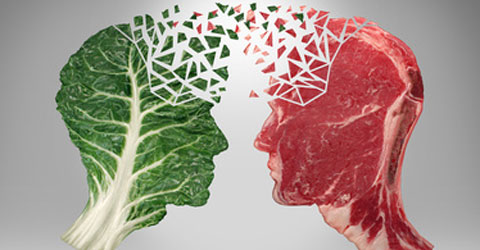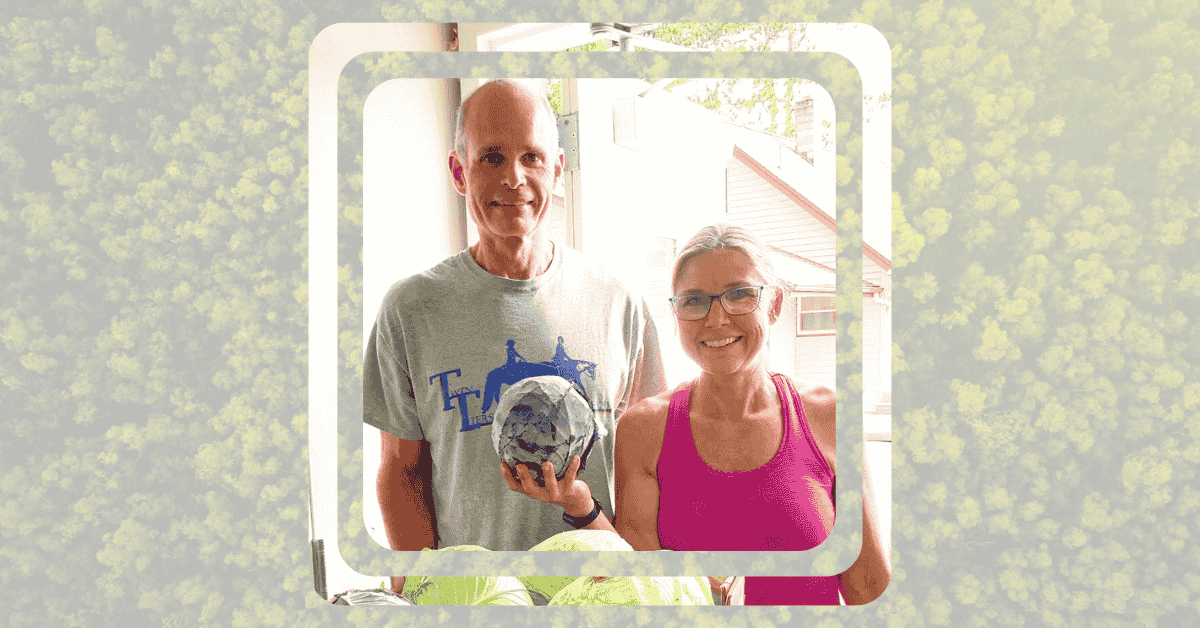

At the crowded commuter college where I teach in Queens, New York, a “balanced meal” consists of whatever concessions students can balance with the load they already carry (not just a heavy book bag, but often parenting and full-time jobs). Our busy campus sits in an eclectic city landscape where elevated trains, skyscrapers, museums, and residences converge with restaurants, slaughterhouses, factories, and dairy bottlers. The area aims to offer an integrated whole–with some curious eccentricities. Industrial warehouses swiftly transform into trendy eateries. A century-old milk factory shutters its doors, rendering workers unemployed. Periodically, stockyard bovines escape into the borough’s busy streets. The incongruous image of the “cow in the metropolis” warranted a classroom discussion or two, and it got me thinking: if a cow can break free from the confines of an urban kill floor, I might similarly shatter the boundaries of my discipline to invite an unlikely guest–the subject of nutrition–into the composition classroom.
Both on and off campus, “food” in Queens can mean processed, mass-produced commodities or a variety of cultural cuisines traditionally featuring animal products. Ironically, it was living and working against such a backdrop that I became a devoted, whole food, plant-based eater. My eyes were first opened by The China Study and the flood of published studies and documentary films it inspired. As a writing professor, I marvelled at how powerful this research was, and I wondered how anyone could choose not to eat a whole food, plant-based diet in the face of such incontrovertible evidence. Not only did I stop eating junk after gaining a deep understanding what real food is, but nutrient-rich whole foods genuinely became more appealing; yes, once my body and mind were in sync, a plant-based diet truly tasted better. Perhaps the most significant appetite shift does not start in the dining hall, but in the library!
Since a key objective in college writing is learning how to defend a compelling thesis argument in response to a controversial discourse, I considered how the growing body of evidence comparing the Standard American Diet with a Plant-Based Diet might serve as a model resource for learning basic argumentative skills. At first, I felt uneasy about teaching literature associated with science, a subject customarily kept discrete from the humanities. However, the Plant-Based Nutrition Certificate supplemented my existing academic credentials and gave me the confidence and credibility I needed to forge ahead.
Now that I have integrated nutrition into multiple writing classes over several successful semesters, I can offer the following observations as fruits of this endeavor. This is what you can expect when composition and nutrition come together in the classroom:
- Students reflect deeply on something they previously took for granted. They consider how they came to define “food,” what is excluded/included in their definitions, and why. These definitions vary from student to student and can make for animated class discussions and peer review opportunities.
- Enthusiastic debates are guaranteed. Cultural customs, commercial conveniences, and nutritional facts can serve as endless fodder to challenge shifting definitions of “food.” The challenge becomes supporting claims with evidence rather than long-held beliefs, conditioned impressions, or uninformed opinions.
- Vocabularies become enriched with terms all consumers should know. Terms like “monocropping,” “holism,” “type 2 diabetes,” and “high fructose corn syrup” come to roll off students’ tongues as they gain awareness of what they consume every day. They learn to distinguish “vegan” from “plant-based” and are amused by how accurately the acronym “SAD” sums up the Standard American Diet.
- Students demand to know why they haven’t heard this before–a question readily answerable by section four of The China Study: “Why Haven’t You Heard This Before?” Learners are simply stunned by the wealth of evidence against animal consumption and supporting plant-based eating.
- Nutrition proves one of the most democratic topics you can deal with in the classroom. Everyone eats and comes with a perspective on what that means. Either they just ate, will eat after class, or they’re clandestinely munching something they’ve smuggled into the classroom. (The nutrition info printed on vending machine contraband makes a great impromptu resource, and thanks to my Center for Nutrition Studies (CNS) training I can help others compute the facts behind the “facts.”) Students have the freedom to personalize their own approach to this hyper-accessible subject matter; it is immediately applicable, interactive, and relevant.
- The art of formulating arguments and counterarguments emerges naturally. When writers attempt to defend the consumption of animal protein, they often find they are grasping at straws, however. Keen researchers realize the lack of reliable, unbiased evidence against plant-based nutrition. Even die-hard devotees of processed foods, meat, and dairy usually give up and write papers that argue for a whole food, plant-based diet. Indeed, it’s all about the evidence.
- Students learn to discern truth from tradition, habit, or convention. They must consider the reliability of sources and how ubiquitous profit-making parties (even government and healthcare) influence our perception of what is real. This is not only a valuable research skill, but a potentially life-saving lesson.
- Writing about nutrition tends to inspire deeper metacognitive musings, like “why do so many of us believe the evidence, yet still not practice it?” Psychology majors enjoy a quick application of Doug Lisle’s The Pleasure Trap and Neal Barnard’s The Cheese Trap theories (both authors whose work I came to know through the CNS program).
- Multimedia resources abound and make it easy to connect plant-based nutrition to complementary discourses. Documentaries like PlantPure Nation, King Corn, Forks Over Knives, Cowspiracy, Earthlings, and What the Health expose learners to real-life factory farms, flavor labs, slaughterhouses, processing plants, healthcare facilities, government offices, and dinner tables across the nation. Plant-based nutrition pairs readily with topics like animal cruelty, climate change, conservation, and legislation and regulation. The China Study teaches well alongside Jonathan Safran Foer’s Eating Animals, Melanie Joy’s Why We Love Dogs, Eat Pigs, and Wear Cows, Eric Schlosser’s Fast Food Nation, and Al Gore’s An Inconvenient Truth, for example.
- It promotes lifelong learning (and longer lives!). Though I do not actively seek to change students’ eating habits as a writing teacher, working with research on plant-based nutrition becomes life-changing for many students. Some alter the way they eat and share their newly-found knowledge with their families. I’ve had students report how their health, or the health of their parents or grandparents, improved after adopting a plant-based diet. This can be a thrilling side effect of plant-based writing and research.
By the end of the semester, writing about nutrition in the composition classroom doesn’t appear as awkward as a cow running down the city street. There are other signs of progress and community integration. One urban slaughterhouse escapee was rescued and retired to a New Jersey farm sanctuary. The defunct dairy bottler successfully reemerged under a plant-based nut milk label. Across the street from our campus, a converted warehouse features an enormous glass-enclosed kitchen that prepares food for over 60 locations of a popular plant-based restaurant chain.
Queens, often dubbed “the world’s borough,” is changing. Students around the globe are seizing new opportunities through educational outreach organizations devoted to plant-based wellness and wellbeing. They are planting rooftop gardens, veganizing cafeterias, using interactive virtual technologies to experience slaughterhouse reality, and organizing screenings of films that promote health for our entire planet.
While inspiring students to reflect, research, and write about processed food, animal-based products vs. whole food, plant-based nutrition, I’m not teaching dietetics, but argumentation. I don’t set out to change students’ diets or to change students into dieticians, but to make them better at informing and defending their own convictions. Studying nutrition across or in between disciplines can bring vital awareness and improved health to all of the communities in which we learn and live. It can link a class, or a whole campus, together through interdisciplinary initiatives. It holds enormous potential for dynamic societal interaction. With nutrition across the curriculum, we gain mathematicians who know how to crunch nutrition facts, psychologists who analyze addictive eating habits, healthcare workers who employ nutritional (not just procedural and pharmaceutical) solutions, business people who mindfully examine ethics of food production and marketing, and so on. We might not all aim to become nutritionists, but we are fundamentally nutrition seekers, and this relates to every major and every profession out there. This may very well be the most powerful way that individuals can connect and cooperate to nourish any community as an integrated whole.
Copyright 2025 Center for Nutrition Studies. All rights reserved.
Deepen Your Knowledge With Our
Plant-Based Nutrition
Certificate
Plant-Based Nutrition Certificate
- 23,000+ students
- 100% online, learn at your own pace
- No prerequisites
- Continuing education credits











